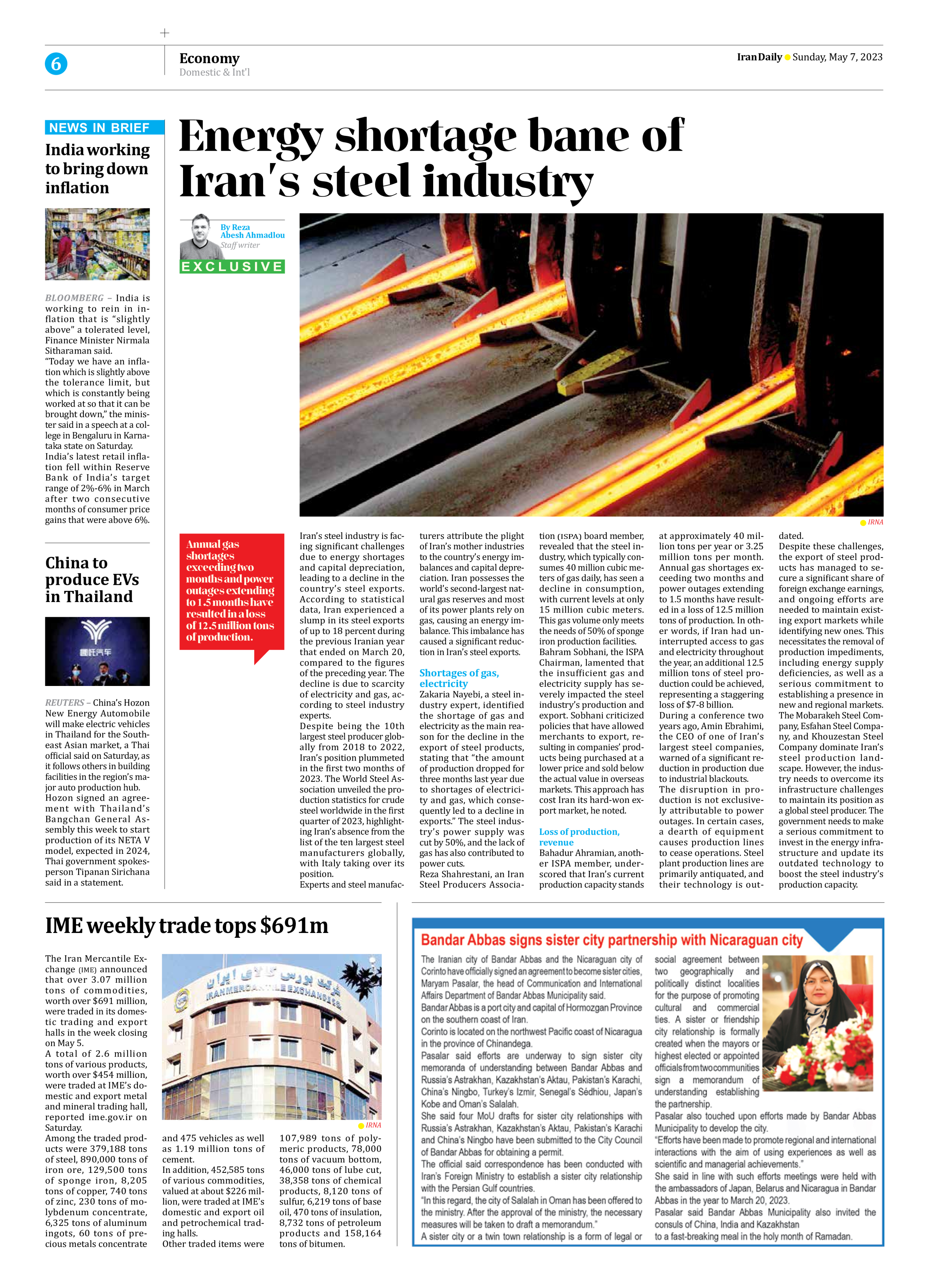
Energy shortage bane of Iran’s steel industry
By Reza Abesh Ahmadlou
Staff writer
Iran’s steel industry is facing significant challenges due to energy shortages and capital depreciation, leading to a decline in the country’s steel exports. According to statistical data, Iran experienced a slump in its steel exports of up to 18 percent during the previous Iranian year that ended on March 20, compared to the figures of the preceding year. The decline is due to scarcity of electricity and gas, according to steel industry experts.
Despite being the 10th largest steel producer globally from 2018 to 2022, Iran’s position plummeted in the first two months of 2023. The World Steel Association unveiled the production statistics for crude steel worldwide in the first quarter of 2023, highlighting Iran’s absence from the list of the ten largest steel manufacturers globally, with Italy taking over its position.
Experts and steel manufacturers attribute the plight of Iran’s mother industries to the country’s energy imbalances and capital depreciation. Iran possesses the world’s second-largest natural gas reserves and most of its power plants rely on gas, causing an energy imbalance. This imbalance has caused a significant reduction in Iran’s steel exports.
Shortages of gas,
electricity
Zakaria Nayebi, a steel industry expert, identified the shortage of gas and electricity as the main reason for the decline in the export of steel products, stating that “the amount of production dropped for three months last year due to shortages of electricity and gas, which consequently led to a decline in exports.” The steel industry’s power supply was cut by 50%, and the lack of gas has also contributed to power cuts.
Reza Shahrestani, an Iran Steel Producers Association (ISPA) board member, revealed that the steel industry, which typically consumes 40 million cubic meters of gas daily, has seen a decline in consumption, with current levels at only 15 million cubic meters. This gas volume only meets the needs of 50% of sponge iron production facilities.
Bahram Sobhani, the ISPA Chairman, lamented that the insufficient gas and electricity supply has severely impacted the steel industry’s production and export. Sobhani criticized policies that have allowed merchants to export, resulting in companies’ products being purchased at a lower price and sold below the actual value in overseas markets. This approach has cost Iran its hard-won export market, he noted.
Loss of production,
revenue
Bahadur Ahramian, another ISPA member, underscored that Iran’s current production capacity stands at approximately 40 million tons per year or 3.25 million tons per month. Annual gas shortages exceeding two months and power outages extending to 1.5 months have resulted in a loss of 12.5 million tons of production. In other words, if Iran had uninterrupted access to gas and electricity throughout the year, an additional 12.5 million tons of steel production could be achieved, representing a staggering loss of $7-8 billion.
During a conference two years ago, Amin Ebrahimi, the CEO of one of Iran’s largest steel companies, warned of a significant reduction in production due to industrial blackouts.
The disruption in production is not exclusively attributable to power outages. In certain cases, a dearth of equipment causes production lines to cease operations. Steel plant production lines are primarily antiquated, and their technology is outdated.
Despite these challenges, the export of steel products has managed to secure a significant share of foreign exchange earnings, and ongoing efforts are needed to maintain existing export markets while identifying new ones. This necessitates the removal of production impediments, including energy supply deficiencies, as well as a serious commitment to establishing a presence in new and regional markets.
The Mobarakeh Steel Company, Esfahan Steel Company, and Khouzestan Steel Company dominate Iran’s steel production landscape. However, the industry needs to overcome its infrastructure challenges to maintain its position as a global steel producer. The government needs to make a serious commitment to invest in the energy infrastructure and update its outdated technology to boost the steel industry’s production capacity.







